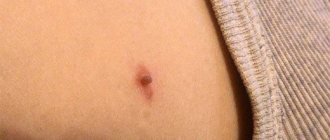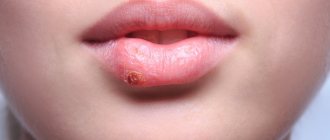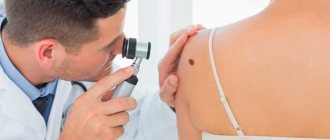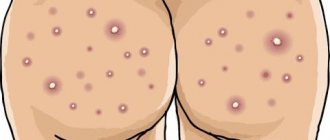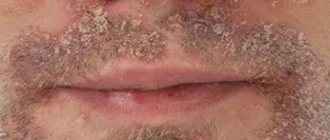Stretch marks are quite common, especially purple ones. They occur in 50% -80% of the population on different parts of the body and are caused by various factors. They appear as red, purple or white narrow and long stripes or lines on your skin. New stretch marks are often purple.
Like any other scars, stretch marks are permanent. However, you can improve their appearance with treatment. This article covers everything you need to know about purple stretch marks and how to get rid of them. Scroll down for more information on how to remove purple stretch marks
What are purple stretch marks and what causes them?
Stretch marks develop when your skin is stretched beyond its capacity. Many factors can stretch your skin, causing rapid and dramatic changes in elastin and collagen fibers. Both elastin and collagen fibers support the skin to keep it healthy. Abnormal stretching damages these fibers. As your skin tries to heal itself, stretch marks develop.
In the early stages, stretch marks may appear reddish and purple. They may also appear pinkish or reddish-brown, depending on your skin tone. Early stretch marks may be a little itchy and slightly raised when you run your fingers over them.
Purple stretch marks do not develop everywhere. They develop in certain areas.
Why are stretch marks red?
You might notice red lines on your stomach, thighs, arms or any other parts of your body. These red lines are stretch marks or striae rubra. This is a general skin condition that is caused by overexertion. Excessive stretching of the skin damages the elastic fibers in it.
New stretch marks are usually red because the skin in the area becomes thinner. As a result, the blood vessels present under the skin will be visible and the stretch marks will appear red. However, the redness disappears and the color of the stretch marks changes over time.
Several factors are responsible for skin tension.
Where do purple stretch marks appear on the body?
The most common areas where you get stretch marks are:
- Abdomen
- Hips
- Buttock
- Hips
- Lower back
- Breasts
- Forearm
We recommend reading
What is keto rash - causes, and how to treat it?
Early stretch marks are easier to treat than late stretch marks (also called white stretch marks). This happens because early stretch marks respond to treatment. While you can't erase them completely, you can improve their appearance and prevent the marks from becoming severe.
How to remove purple stretch marks: possible methods
Microneedling
Microneedling can help reduce previous stretch marks. In the study, 16 Korean women received three courses of treatment four weeks apart. Seven patients showed excellent improvement (43.8%), while the remaining nine patients showed minimal or moderate improvement.
No significant side effect was reported except erythema, mild pain, and spotty bleeding.
Retinoids
Tretinoin (Retin-A) is a medication and a form of vitamin A. It may help reduce the appearance of early stretch marks. However, it can cause redness, skin irritation and flaking. Also, avoid using tretinoin if you are pregnant.
Chemical peeling
Chemical peels are applied to the skin to remove the top layer and dead skin cells. It can make the skin smooth. Doctors may also use chemical peels to minimize the appearance of stretch marks. However, several sessions may be required.
Laser therapy
Laser therapy is an effective way to improve the appearance of new stretch marks. In a small study, a 585 nm pulsed dye laser with a 10 mm spot improved the appearance of stretch marks. In another study, a1064-nm long-pulse Nd:YAG laser improved immature violet stretch marks.
People often use natural and home remedies to remove purple stretch marks. But do they work? Find out about this in the next section.
How to remove red stretch marks: treatment methods
Here are some remedies that can help remove red stretch marks.
1. Medical procedures and options for removing red stretch marks
Microdermabrasion
Microdermabrasion is one of the best ways to combat red stretch marks. Numerous studies have shown that microdermabrasion can help improve the appearance of red stretch marks. Microdermabrasion is a process in which a wand-shaped device with a crystal tip is rubbed into your skin to cool the top layer. This helps make your skin smoother.
We recommend reading
How to tighten your skin after losing weight
Microilding to remove red stretch marks
The needles in the microneedling device poke the skin to boost collagen production. A study conducted on Korean women found that microneedling can improve the appearance of early stretch marks.
Laser therapy to remove red stretch marks
Treatment of red stretch marks with a 1064 nm long-pulse Nd:YAG laser has been found to be effective in improving their appearance. It not only reduces redness, but also increases collagen production, thereby improving the appearance of stretch marks.
Therapeutic Creams for removing red stretch marks
Tretinoin creams have been found to improve the appearance of red stretch marks. However, they can also cause irritation, redness and peeling of the skin. Pregnant women should also avoid using tretinoin creams.
Emollient oils are also helpful in treating and preventing red stretch marks. The use of emollients helps improve skin elasticity, which prevents and treats early stretch marks. One anti-stretch mark ointment that was studied in Romania included emollient ingredients such as argan oil, cocoa butter and beeswax.
Chemical peel to remove red stretch marks
In this process, skin acids are used to peel away the top layer of your skin, revealing a smoother surface. This may help in the gradual disappearance of red stretch marks, although the effectiveness of this treatment is unknown.
You can even try home remedies to remove your red stretch marks. However, there is not enough scientific evidence that these home treatments will give you results.
II. How to remove red stretch marks with home remedies
1. Creams and lotions for stretch marks
There are topical creams and lotions available for fading stretch marks. There is no scientific evidence to support the effectiveness of these products or their ability to fix torn elastic fibers in your skin. However, these creams can moisturize your skin, which can reduce the appearance of early stretch marks.
2. Almond oil for red stretch marks
You can prevent the formation of stretch marks by massaging your skin with almond oil. This helps keep it hydrated and improves elasticity. Almond oil prevents stretch marks even when your skin stretches during pregnancy.
3. Hyaluronic acid for red stretch marks
According to the American Academy of Dermatology, applying hyaluronic acid to early stretch marks can help reduce their appearance. This can help fade them and make them less noticeable.
We recommend reading
Can tea tree oil treat keloid scars?
4. Keep Your Skin Moisturized
Apply emollient ingredients such as cocoa butter and beeswax to keep your skin hydrated and prevent stretch marks. You may even consider massaging your skin with other emollients such as shea butter, virgin coconut oil or any other plant oils.
While there is no evidence that these ingredients reduce or prevent stretch marks, they can keep your skin hydrated. This may help in reducing the appearance of stretch marks.
5. Check Your Diet
This is important to prevent sudden weight gain and prevent stretch marks. Try to eat a healthy and balanced diet and avoid junk food. A diet rich in essential vitamins and nutrients also keeps your skin healthy.
Apart from these treatments and remedies, there are a few quick fixes for hiding stretch marks that you can use if they bother you:
- DIY: These are available in the form of creams, lotions and sprays and are commonly used to give your skin a tanned appearance. They can help even out your skin tone and hide stretch marks within days.
- Body Makeup: You can use body makeup to hide your stretch marks. However, be sure to use waterproof and transfer-proof makeup so that it stays on your skin even when you are in a humid environment.
Although there are many treatments that claim to help remove red stretch marks, the truth is that you can't make them disappear completely. With proper care and treatment, the marks can only fade and become less noticeable. It's always best to consult a dermatologist to understand how your skin is healing and responding to treatment.
Home Remedies to Remove Purple Stretch Marks: Do They Work?
There is no scientifically proven evidence that home remedies can help remove purple stretch marks. Topical exits may have weak effects. Additionally, it is not yet clear whether the ingredients in topical creams and ointments have any specific effect.
We recommend reading
Tattoos on stretch marks: is it possible to hide stretch marks with a tattoo? Useful tips.
Research has shown that the moisturizing effect of creams and ointments may be responsible for the improvement of stretch marks. Hence, the best thing you can do is to keep your skin well hydrated. You can use vegetable oils for this purpose.
The following plant oils can help keep skin hydrated:
- Almond oil
- Coconut oil
- Sunflower oil
- Grape seed oil
- Argan oil
- Sesame oil
- Avocado oil
- Jojoba oil
- Shea Butter
These oils prevent transepidermal water loss from the skin and maintain the integrity of its natural barrier. You can also use hyaluronic acid, which is believed to stimulate fibroblasts (collagen-producing cells) and keep skin hydrated.
First of all, you must watch your diet. When you eat healthy foods, your skin gets enough nutrients and stays healthy. It can also help you manage your weight and avoid rapid weight gain.
You can also apply moisturizers and lotions to the marks, but there is no evidence that you will get specific results. However, you can use these remedies as a preventative measure to minimize the appearance of stretch marks, especially if you are prone to them. The following factors put you at risk of developing purple stretch marks.
Why do stretch marks appear on the thighs?
Stretch marks appear in places where the skin is chronically overstretched. When the skin produces insufficient collagen and elastin, and the body lacks amino acids necessary for restoration, the damage is filled with fast-growing connective tissue. As a result, oblong scars and stretch marks are formed.
There can be quite a few reasons for the appearance of stretch marks on the hips and legs, but a few main ones can be named:
- sharp fluctuations in body weight;
- growth spurt in teenagers;
- endocrine disorders;
- pregnancy;
- intense sports activities;
- genetic predisposition.
Apart from the last point, stretch marks occur during certain disruptions in the body. Extremely rapid weight changes, muscle growth—anything that is stressful for the body and directly affects the skin can cause stretch marks to appear. It is important to understand why you have stretch marks on your thighs in order to not only effectively deal with them, but also to eliminate related problems in the body.
While stretch marks are common during pregnancy or adolescence, in other cases they can indicate serious problems in the body. If you see no reason for the appearance of stretch marks, we recommend that you consult a doctor.
Find out which method of correcting scars and stretch marks is optimal for you!
doctor Svetlana Viktorovna Ogorodnikova.
doctor
Is it possible to prevent the appearance of stretch marks?
Not always. However, there are a few things you can do to reduce your risk of developing stretch marks:
- Keep your skin hydrated.
- Drink plenty of water to keep yourself hydrated.
- Maintain a healthy weight.
- Eat a balanced diet. Consume fresh fruits and vegetables to ensure your skin and body receive the nutrients it needs.
- If you are pregnant, work with your doctor to maintain a healthy weight and follow a healthy diet.
- Exercise regularly to maintain a healthy weight.
We recommend reading
How to use tea tree oil to treat psoriasis
Despite using the suggested remedies and tips, you will not be able to prevent the development of stretch marks. But you can make sure the scars aren't serious by taking good care of yourself. Eventually they will disappear over time.
Symptoms of stretch marks
Striae are easy to detect visually. These are wavy narrow stripes that are noticeable on the surface of the skin of the abdomen, thighs and other places. Coloring may vary:
- white;
- bluish;
- pinkish.
Stretch marks change color from reddish to purple over time. By this sign, you can determine the oldness of striae. Also, the skin in the affected areas becomes flabby - this is another clear sign of stretch marks.
As a rule, pathologies associated with striae are accompanied by other symptoms, including hair growth in uncharacteristic places - mustaches, beards in women. Upper type obesity may also develop and blood pressure may increase. These are quite dangerous conditions that cannot be treated on their own - you need to see a doctor and undergo a series of examinations.

